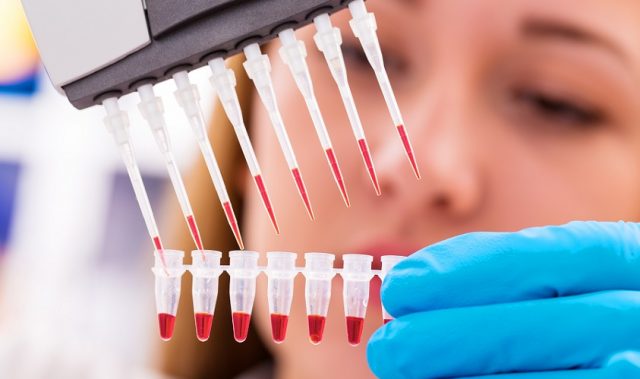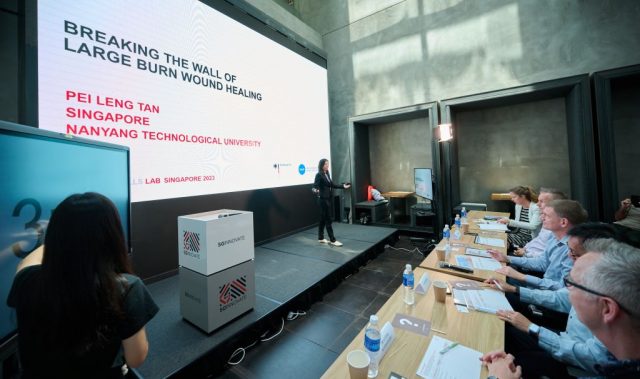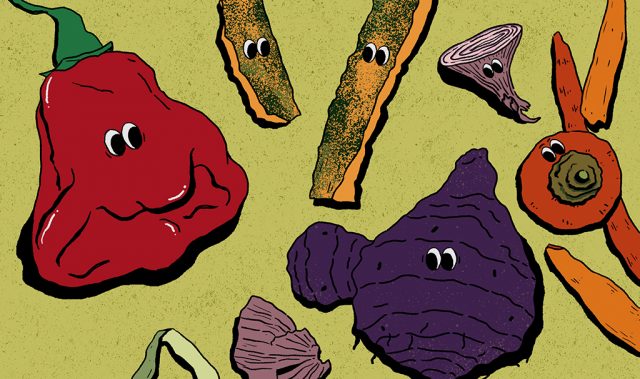
AsianScientist (Feb. 18, 2015) – Nanyang Technological University (NTU) is setting up a new S$30 million (~US$24 million) NTU Institute of Structural Biology (NISB), the first-of-its-kind in Singapore dedicated to structural biology research. It will create a multidisciplinary environment to encourage collaboration across physical, chemical, and biological sciences.
“Structural biology is a key area of study in molecular biology and more importantly, medicine. The strength and beauty of structural biology is that it allows the chemistry of life to be understood in great detail. Using cutting-edge imaging equipment, protein molecules such as enzymes are magnified up to ten million times and beautifully rendered in 3D,” said NTU President, Professor Bertil Andersson.
“These 3D images of proteins at the atomic level hold the key in resolving some of the world’s pressing health problems such as aging and cancer. Understanding how molecules work and how their functions can be modified can help spur ground-breaking drug and vaccine discoveries.”
To be fully operational in the first quarter of 2016, the new institute will have state-of-the-art imaging instruments, with expertise from over 70 top biomedical scientists and researchers in NTU and Singapore, under one roof.
The institute will be led by Professor Daniela Rhodes, an international expert in structural biology who had worked with several Nobel Prize winners during her 42 years at Cambridge University’s world-renowned MRC Laboratory of Molecular Biology.
The institute’s research projects currently in the pipeline will in part be funded by the S$24 million (~US$19.2 million) Tier 3 Ministry of Education research grant won by Rhodes in 2013.
Unlike other fields of sciences, structural biology looks at the incredibly intricate machinery inside each of the millions of cells in our bodies to find out how they affect bodily functions. It is the key area of the life sciences that unearthed the structure of human DNA.
“Structural biology is the most important approach for providing detailed information on the workings of enzymes, whose faulty regulation of genes leads to human diseases. Since 1946, a total of 14 Nobel Prizes have been awarded to 23 scientists who all dwelled in the fields of structural biology,” said Rhodes.
“By using structural methods to reveal 3D structures at the atomic level, we can understand the inner workings of proteins such as enzymes, which in turn will allow the development of solutions to treat critical conditions such as cancer.”
One of the key facilities of the new institute is the Cryo-Electron Microscopy Laboratory. It is the world’s first university research facility to be equipped with an advanced ‘cryo transmission electron microscope’.
This advanced microscope allows high-resolution 3D imaging of molecules half a million times smaller than a grain of rice (ten nanometres). These unique 3D images provide crucial information in drug design and discovery as they explain how molecules work and how their functions can be altered.
The new institute will be part of NTU’s Life Sciences cluster, comprising the Lee Kong Chian School of Medicine (LKCMedicine), the School of Biological Sciences, the School of Chemical and Biomedical Engineering and the Singapore Centre on Environmental Life Sciences Engineering (SCELSE).
It will be housed at LKCMedicine’s new seven-storey Experimental Medicine Building located at the NTU main campus, which will be ready in July this year.
—–
Source: Nanyang Technological University.
Disclaimer: This article does not necessarily reflect the views of AsianScientist or its staff.












